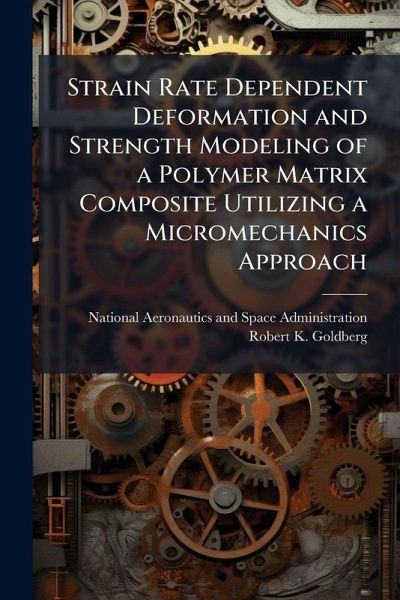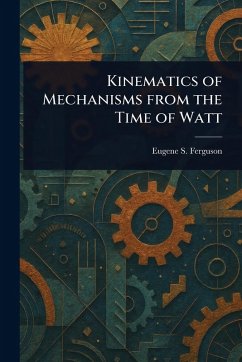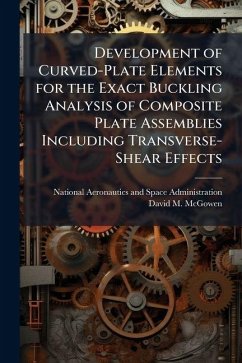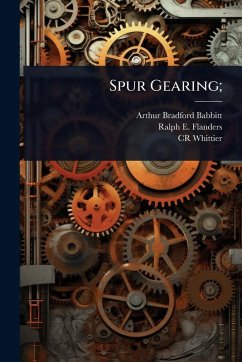
Strain Rate Dependent Deformation and Strength Modeling of a Polymer Matrix Composite Utilizing a Micromechanics Approach

PAYBACK Punkte
8 °P sammeln!
Potential gas turbine applications will expose polymer matrix composites to very high strain rate loading conditions, requiring an ability to understand and predict the material behavior under extreme conditions. Specifically, analytical methods designed for these applications must have the capability of properly capturing the strain rate sensitivities and nonlinearities that are present in the material response. The Ramaswamy-Stouffer constitutive equations, originally developed to analyze the viscoplastic deformation of metals, have been modified to simulate the nonlinear deformation respons...
Potential gas turbine applications will expose polymer matrix composites to very high strain rate loading conditions, requiring an ability to understand and predict the material behavior under extreme conditions. Specifically, analytical methods designed for these applications must have the capability of properly capturing the strain rate sensitivities and nonlinearities that are present in the material response. The Ramaswamy-Stouffer constitutive equations, originally developed to analyze the viscoplastic deformation of metals, have been modified to simulate the nonlinear deformation response of ductile, crystalline polymers. The constitutive model is characterized and correlated for two representative ductile polymers. Fiberite 977-2 and PEEK, and the computed results correlate well with experimental values. The polymer constitutive equations are implemented in a mechanics of materials based composite micromechanics model to predict the nonlinear, rate dependent deformation response of a composite ply. Uniform stress and uniform strain assumptions are applied to compute the effective stresses of a composite unit cell from the applied strains. The micromechanics equations are successfully verified for two polymer matrix composites. IM7/977-2 and AS4/PEEK. The ultimate strength of a composite ply is predicted with the Hashin failure criteria that were implemented in the composite micromechanics model. The failure stresses of the two composite material systems are accurately predicted for a variety of fiber orientations and strain rates. The composite deformation model is implemented in LS-DYNA, a commercially available transient dynamic explicit finite element code. The matrix constitutive equations are converted into an incremental form, and the model is implemented into LS-DYNA through the use of a user defined material subroutine. The deformation response of a bulk polymer and a polymer matrix composite are predicted by finite element analyses. This work has been selected by scholars as being culturally important, and is part of the knowledge base of civilization as we know it. This work was reproduced from the original artifact, and remains as true to the original work as possible. Therefore, you will see the original copyright references, library stamps (as most of these works have been housed in our most important libraries around the world), and other notations in the work. This work is in the public domain in the United States of America, and possibly other nations. Within the United States, you may freely copy and distribute this work, as no entity (individual or corporate) has a copyright on the body of the work. As a reproduction of a historical artifact, this work may contain missing or blurred pages, poor pictures, errant marks, etc. Scholars believe, and we concur, that this work is important enough to be preserved, reproduced, and made generally available to the public. We appreciate your support of the preservation process, and thank you for being an important part of keeping this knowledge alive and relevant.












